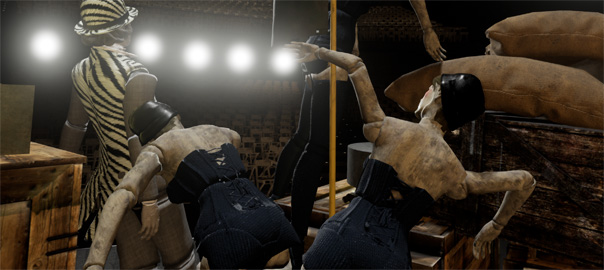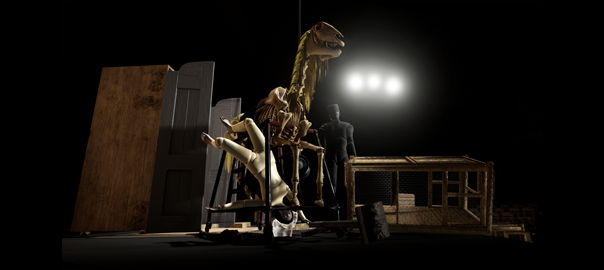Cricoterie is a Virtual Reality program that explores aesthetics of failure, of things not working as expected, of lack of control. This was not necessarily what we intended. But art tends to happen exactly where the artist failed, where they had to fake things, or where they ran into the limitations of their medium: in the simulation, in the pretense, in the imagination, in the discrepancy between the achieved and the desired.
In the thirty years that we have been using computers creatively, they have remained promises that never delivered. The hardware never became fast enough and the software never useful enough. In fact each and every technology we have used has destroyed itself before it could even be explored. From desktop publishing and CD Roms to the world wide web, from HTML web sites to Flash to executables, from desktops to laptops to mobile devices, from net.art to videogames and now VR.
Every technological invention seems to be destined to fail. Almost always for a single reason: profit. New technologies are created within the capitalist system. But they remain underdeveloped precisely because of the commercial context.
Cricoterie is the first project we finished after abandoning both the medium of videogames and the practice of commercial distribution, in favor of a more sincere and focused approach to artistic creation. We’re proud of Cricoterie like any parent would be. But we are also skeptical. It’s hard to not make games in an interactive medium. And it’s hard not to make contemporary art in general. We love Virtual Reality. But there will not be enough time to explore it before this one fails too.
There is nothing we can do but accept this. We have to accept that our work is in fact to a large extent about failure. Not just our own failure to live up to the artistic quality we aspire to. Not just the failure of technology and its capitalist context. But ultimately also about the fatal failure of humanity to avoid being the cause of the sixth extinction.
Working with technology becomes a very melancholic activity. We are creating beauty with things that are destined to crumble. Drawings in the sand. Only far less poetic and a million times more difficult. Never to be able to reach a goal. Always falling short. Always losing. It’s a humbling sort of work. And perhaps this humility is exactly what is needed. Maybe there is some beauty in this weakness, in this failure. Maybe there is love to be found, or at least sympathy when we can recognize that we are all massive failures, the few that win perhaps most of all.
So we connect back to the inspiration behind Cricoterie: the theater of death of the Polish artist Tadeusz Kantor with its themes of war, holocaust, suffering and death and its aesthetics of poverty and misery. We did not relate to his work when we first encountered it but when we started exploring it we began to see if not beauty, then at least some kind of honesty.
Our horribly destructive era does not deserve beautiful art, art that celebrates the human spirit, the beauty of nature or grand spiritual aspirations. We get the art we deserve. The best we can do is steer away from cynicism and to seek a sort of forgiveness through art, perhaps even redemption. A new form of praying.
Solving this problem is impossible. Solving problems has caused enough trouble already, anyway. Let’s just slow down and look this monster of our own creation in the eyes. And try to forgive each other.






